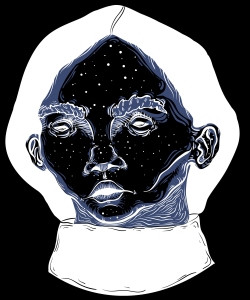Exhibition Review
TINTIN: Hergé’s Masterpiece
I visited the tin tin exhibition in Somerset house. The comics are illustrated by the self taught artist Hergé (real name:Georges Remi, 1907-1983) (BBCnews,2009). Tin Tin is one of the most popular comics until this day. It is about a young journalist and his dog going on adventures together. Even though there is not much information to find on the Somerset website, I was able to find out that Michael Farr helped to put the exhibition together (BBCnews, 2015).
The layout and the feel of the exhibition was quite unusual. It felt like a collectors home not like an art gallery. There were two fire places in each room, opposite each other and there were 3 rooms in total. When you walk into the room you immediately notice the illustrated picture frames which showed different characters from the comics. The rest of the left wall was dark and light blue striped. 1 or 2 miniature models of locations shown in the comic were placed almost In the center of the room. When you enter the each room you would immediately see the wall opposite of you that has photographs, the year number, and information printed on it. The fireplace was placed right under the information with picture frames carefully assembled on top of it. On the right wall you could see large frames 2 or 3 in each room. Those contained newspaper articles, original drawings and final prints. On the right large windows were covered with illustrations from the comic book so that almost no light would be able to shine through anymore. Everything had a very familiar feel to it. Almost like you would enter someones house.
The style of the exhibition suited his work very well. Also the atmosphere was very enjoyable and relaxed. The curator even included distortion mirrors in the first room on the left wall, which lightened the mood right at the beginning of the exhibition. Also the rooms of the summer set house were very suited for the exhibition. the old windows, and the wooden floor, even the fireplaces, and the vintage lighting were perfectly fitted to the purpose of the exhibition.
The whole concept was to explore ‘the evolution of the artwork of Hergé’ (Sommerset,2015). Which I think was very well communicated. I personally really enjoyed the curation, but also that it stood out from other exhibitions I have visited in the past. I liked that they not only concentrated on his work but also on Hergé himself and included photographs of his workplace and friends. They incorporated his style very nicely and presented his work well. There was a good variation of model making, illustration and background information.
Overall I think the exhibition was very fun and enjoyable and a very good weekend activity however if you are looking for something challenging and view changing this exhibition would not provide that. But it was very hard to get bored in that exhibition which I think is a very positive aspect.
Bibliography
https://www.somersethouse.org.uk/visual-arts/tintin





